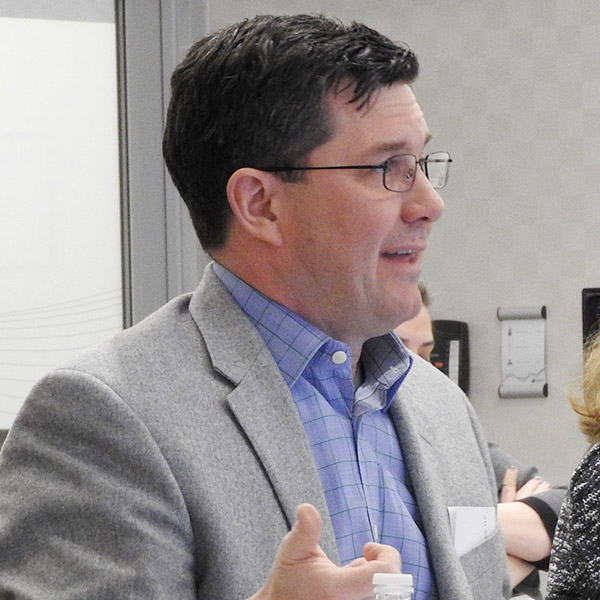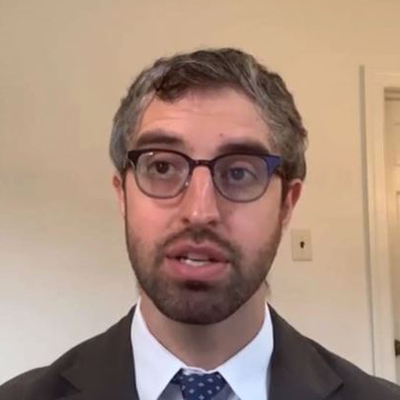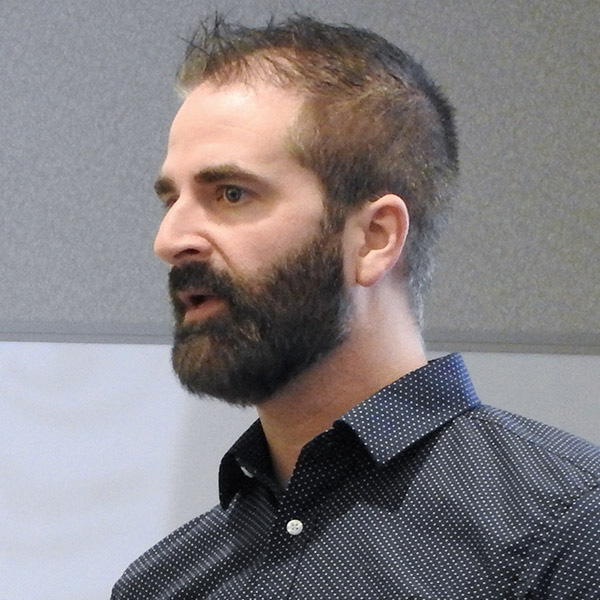
Markets and Reliability Committee
Deactivation Process
PJM detailed changes in a proposal to update the process timing for generation deactivations at last week’s Markets and Reliability Committee meeting after some stakeholders previously requested that the RTO slightly modify the language.
David Egan, manager of PJM’s system planning modeling and support department, reviewed the proposal, presenting the revisions to Manual 14D and the tariff in a first read at the MRC. Stakeholders previously gave near unanimous support of the issue charge at the March 8 Planning Committee meeting. (See “Deactivation Process Timing Update Endorsed,” PJM PC/TEAC Briefs: March 8, 2022.)
Egan said current language in the tariff provides 90 days advance notice and 30 days to complete deactivation studies, which is causing “insufficient and unsustainable” time for PJM staff to determine adverse impacts on reliability if more than one deactivation notice is made in a single study period. Industry trends and state energy policies are increasing the number of deactivation notices, Egan said, putting even more pressure on staff to finish studies in a timely manner.
“Thirty days to perform what is the equivalent in the interconnection process of a system impact study leads to overly conservative assumptions, which generally lead to inaccurate results,” Egan said.
The issue charge calls for changes to the tariff and manual to “provide more time to complete analyses, allow additional and improved studies, and provide the ability for more efficient work control and consistency regarding timing of deactivation studies,” Egan said.
The proposed deactivation process establishes quarterly study times for requests, with periods beginning Jan. 1, April 1, July 1 and Oct. 1. PJM staff would study deactivations “holistically” as a batch, Egan said, providing more accurate study results for impacts on the system.
The quarterly schedule would allow enough time for additional required seasonal, interim year and short-circuit analyses, scheduling upgrades, and cost estimates, Egan said, and for PJM operations to identify additional needed operational measures.
 A series of 11 deactivation requests in July of 2021 prompted PJM to seek solutions to the review schedule for the RTO’s staff. | PJM
A series of 11 deactivation requests in July of 2021 prompted PJM to seek solutions to the review schedule for the RTO’s staff. | PJM
Egan said PJM is a “significant outlier” compared to other RTOs and ISOs in the deactivation process. MISO requires advance notice of 26 weeks for a deactivation, and the studies include 75 days to identify issues and 26 weeks to complete the deactivation study. NYISO requires advance notice of 365 days for deactivation, and studies are conducted in the subsequent quarter.
PJM granted a stakeholder request to insert tariff language that doesn’t constrain a generator to a specific time frame for deactivation and to create exemptions if a unit is forced to deactivate through state legislation or actions by the federal government.
Jason Barker, Exelon
” data-credit=”© RTO Insider LLC” data-id=”4325″ style=”display: block; float: none; vertical-align: top; margin: 5px auto; text-align: left; width: 200px;” alt=”Barker-Jason-2019-03-06-(RTO-Insider)-FI.jpg” data-uuid=”YTAtNTUwMTE=” align=”left”>Jason Barker, Exelon | © RTO Insider LLC
Jason Barker of Constellation Energy asked how a generator that experiences a catastrophic failure will be studied or considered by PJM. He requested that PJM provide an opportunity for an expedited review so that owners don’t undertake carrying costs for waiting to decommission a unit that is “clearly not going to be operating any longer.”
Egan said the impact from a unit that has a catastrophic failure “doesn’t really change anything” because it will still have market obligations and have to look for alternative sources to fulfill the obligations.
“This whole process requires coordination with both transmission owners and generation owners to make sure we are able to mitigate problems on the system,” Egan said.
PJM will move conforming Manual 14D language through the Operating Committee and the Systems Operation Subcommittee if stakeholders endorse the proposal at the April 27 MRC meeting and the final tariff language endorsement at the May 17 Members Committee meeting.
Procurement of Clean Resource Attributes
Dave Anders, PJM
” data-credit=”© RTO Insider LLC” data-id=”4346″ style=”display: block; float: none; vertical-align: top; margin: 5px auto; text-align: left; width: 200px;” alt=”Anders-Dave-2019-04-10-(RTO-Insider)-FI.jpg” data-uuid=”YTAtNTYwMzU=” align=”left”>Dave Anders, PJM | © RTO Insider LLC
Dave Anders, director of stakeholder affairs for PJM, reviewed a proposed issue charge from the Resource Adequacy Senior Task Force (RASTF) addressing the procurement of clean resource attributes and the creation of a new senior task force.
Anders said the first key work activity in the RASTF’s own issue charge was to determine whether the “forward procurement of clean resource attributes” should be pursued by stakeholders and to examine the inclusion of the social cost of carbon in PJM markets.
After discussions in the task force over the last few months, Anders said, stakeholders recommended a new issue charge for continued discussions and the development of potential market rules to implement the “preferred” design for clean resource procurement. Anders said 70% of RASTF members endorsed pursuing a new issue charge.
Anders said the new issue charge calls for a “comprehensive discussion of market enhancements” that would enable states and other buyers to procure clean resource attributes “on a voluntary basis, through a regional and centralized procurement or market.”
 Walter Graf, PJM | FERC
Walter Graf, PJM | FERC
Walter Graf, PJM’s senior director of economics and market services, provided details about the issue charge. Graf said stakeholders expressed interest in having a forum for a “comprehensive discussion on enhancements to the PJM markets.”
Work would start with education on the procurement of clean resource attributes, including defining clean resource attributes across jurisdictions, markets and procurement mechanisms. The second step calls for discussing the objectives of a market construct to enable voluntary procurement of clean resource attributes.
Graf said PJM and stakeholders will determine an approach to conduct analysis and select one or more market design solutions for further development.
The expected deliverables in the issue charge include the education and analysis identified in the scope of work and any proposed market rules to implement the preferred design if one is found.
Denise Foster Cronin
” data-credit=”© RTO Insider LLC” data-id=”4475″ style=”display: block; float: none; vertical-align: top; margin: 5px auto; text-align: left; width: 200px;” alt=”FERC environmentalists energy efficiency” data-uuid=”YTAtMzY2MTc=” align=”left”>Denise Foster Cronin | © RTO Insider LLC
Discussions would take place in a new Clean Attribute Procurement Senior Task Force reporting to the MRC, and work would continue through the second quarter of 2023.
Denise Foster Cronin of East Kentucky Power Cooperative asked if PJM anticipates moving forward with some type of market change even if the analysis resulting from the new task force doesn’t fully satisfy stakeholders.
Graf said PJM is initiating the conversation “with the hope that we would get something useful out of it.” He said PJM is looking to come to a consensus or compromise on the issue, but endorsing a solution is not necessary.
The committee will be asked to approve the recommendation at its April meeting.
CCSTF Sunset Endorsed
Members unanimously endorsed the sunset of the Capacity Capability Senior Task Force (CCSTF), bringing the work of the group to a close after nearly two years of discussions.
Melissa Pilong of PJM reviewed the sunset proposal and also presented the final report of the work completed by the task force. The CCSTF was originally created in March 2020 to consider using effective load-carrying capability (ELCC) to set the capacity value of limited-duration resources such as battery storage.
Stakeholders endorsed a joint proposal in September 2020 to use the ELCC method to calculate the capacity value of limited-duration, intermittent and combination (limited-duration plus intermittent) resources. FERC approved PJM’s proposal in August. (See FERC Accepts PJM ELCC Tariff Revisions.)
Pilong said work originally endorsed by stakeholders for a second phase of discussions at the CCSTF was moved to the RASTF. The additional work includes a discussion of other rules or rule changes that may be necessary for limited-duration resources to participate in energy and ancillary service markets.
 David “Scarp” Scarpignato, Calpine | © RTO Insider LLC
David “Scarp” Scarpignato, Calpine | © RTO Insider LLC
Calpine’s David “Scarp” Scarpignato asked if work by stakeholders to examine using ELCC for all resources and evaluate its usefulness should be done at the CCSTF in the future rather than the RASTF because of the amount of detail needed to be discussed on the issue.
“It’s a ton of work, and I think it would take awhile to do,” Scarp said.
Anders said two different key work activities in the RASTF issue charge relate to the ELCC issue, including activities dealing with the risks and drivers and their relationship to accreditation of resources.
“There would be no reason to keep this CCSTF open to deal with that issue,” Anders said.
Max Emergency Changes Endorsed
Stakeholders unanimously endorsed PJM’s proposal to extend a temporary change to the maximum emergency status for gas combustion turbines and steam generators and an issue charge to look at a long-term solution.
 Chris Pilong, PJM | © RTO Insider LLC
Chris Pilong, PJM | © RTO Insider LLC
Chris Pilong, of PJM’s operations planning department, reviewed the revisions to Manual 13: Emergency Operations in a problem statement and issue charge. Pilong said PJM made a temporary change to section 6.4 of Manual 13 in a “note” to modify the remaining hours under which a resource may be offered as maximum emergency generation to address recent concerns with fuel security and new emission standards in states.
The changes, which were endorsed in October, said PJM may request a generation owner to move steam units, which are mostly coal-fired, into the maximum emergency category if their remaining run time falls below 240 hours, or 10 days. The units could be restricted from operating during that time unless required to meet reliability needs for the grid. (See Global Fuel Supply Prompts PJM Manual Changes.)
Pilong said units could remain in maximum emergency status until their fuel inventory rose above 21 days, or 504 hours, and the designation would only be implemented to address concerns with local or regional reliability resulting from fuel supply shortages. The previous run-hour threshold for a maximum emergency was 32 hours.
Pilong said the manual change was set to expire April 1, but it needed to be extended to give PJM and stakeholders more time to work on a permanent solution.
The work on the long-term solution was requested to take place under a new problem statement and issue charge titled “Max Emergency Changes for Resource Limitations,” which stakeholders unanimously endorsed at the MRC.
The issue charge calls for reviewing and modifying existing rules in response to concerns with the fuel and non-fuel supply chain, as well as the increasing environmental restrictions on generators that are creating challenges with managing run hours. Pilong said key work activities include examining the hours remaining at which max emergency can be used on a unit, along with the procedures and communications associated with a max emergency event.
The expected deliverables include education on unit eligibility and the opportunity cost calculator, as well as potential revisions to Manual 13 and “enhancements” to existing processes.
Pilong said PJM wants to spend four months working on the issue in the Operating Committee and have a solution before the summer 2022 peak period.
Combined Cycle Minimum Run Time Guidance Endorsed
Members unanimously endorsed a proposal and manual revisions that have been discussed for several months in committees to address pseudo-modeled combined cycle minimum run time guidance.
Tom Hauske, principal engineer in PJM’s performance compliance department, reviewed the proposal that includes adding language to Manual 11: Energy and Ancillary Services Market Operations.
Hauske said market sellers can model a combined cycle generation unit as multiple “pseudo units” that are made up of a single combustion turbine and a portion of a steam turbine. But he said the potential exists for one or more of the pseudo-modeled units to operate for a period beyond the minimum run time parameter limit compared to an identical non-pseudo-modeled combined cycle unit if the market units of a pseudo-modeled combined cycle unit are dispatched at different times because the steam turbine takes extra time to reach operative levels.
Hauske said the proposed solution calls for adding language to Manual 11 to require market sellers to update the minimum run time of any subsequent pseudo-modeled unit to remove the associated steam turbine start-up time included in the parameter limit when it’s dispatched.
PJM wanted to have the final endorsement in place at the March MRC meeting because the RTO’s unit-specific parameter adjustment process started earlier this month, and determinations on requests must be made by April 15.
Consent Agenda
Stakeholders unanimously endorsed four manual revisions as part of the MRC consent agenda. They included:
- revisions to Manual 12: Balancing Operations resulting from a periodic review. The changes include attachment references and other minor revisions.
- revisions to Manual 13: Emergency Operations resulting from a periodic review. The changes include new columns with winter values for estimated peak load and estimated load reduction in the voltage reduction summary table.
- revisions to Manual 18: PJM Capacity Market to conform with several recent FERC orders, including those on the minimum offer price rule, the market seller offer cap and the removal of the 10% cost adder for the reference resource used to establish the variable resource requirement curve.
- revisions to Manual 37: Reliability Coordination resulting from a periodic review. The language would properly label Silver Run Electric as a transmission owner in Attachment A of the manual.
Members Committee
Remote Voting for Annual Meeting
PJM wants to revise Manual 34 before the Annual Meeting on May 17, which includes the Board of Managers election and General Session, to allow for remote voting.
Michele Greening, manager of PJM’s stakeholder process and engagement department, reviewed proposed revisions to Manual 34: Stakeholder Process to update the ballot process during the Annual Meeting at last week’s Members Committee meeting.
Greening said Manual 34 includes language requiring written paper ballots for the elections of board members and the Members Committee vice chair. She said as the current remote meeting format has gone on for more than two years as a result of COVID-19 protocols, PJM identified the need to “exercise flexibility” to conduct the 2020 and 2021 board elections using an alternative to written paper ballots.
The 2020 board election was done remotely through the PJM Voting Application with special auditing provisions to “ensure ballot confidentiality,” Greening said, and the 2021 board election was conducted through a secure, third-party online election service, Survey & Ballot Systems.
Greening said PJM wants to continue to use a secure third-party voting system for stakeholders not attending the Annual Meeting in person. To make the change permanent, PJM is proposing to modify the current Manual 34 provisions requiring a written paper ballot by striking the language.
The committee will be asked to approve the proposed Manual 34 revisions at the April MC meeting.
